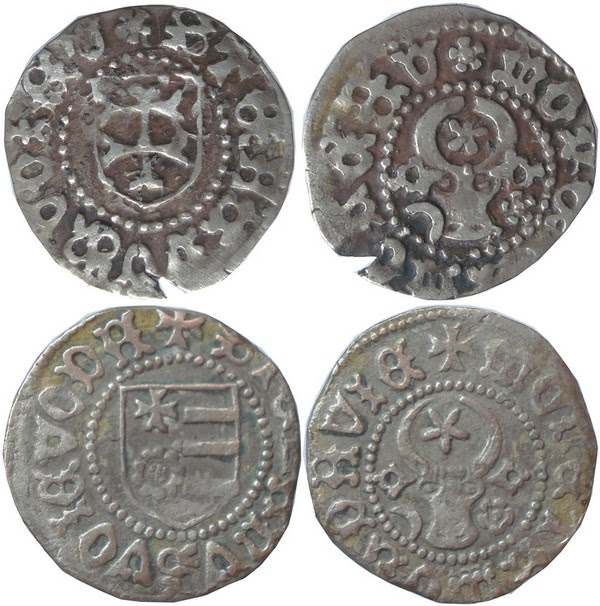  #Exhibit of the Month #Exhibit of the Month
February 2024
The
 The exhibit represents a unique trinocle type vessel. It is dated to the Eneolithic period, the 5th-4th millennia BC, being related to the Cucuteni-Tripolia civilization (Cucuteni A-B - Tripoli B stage).
The exhibit represents a unique trinocle type vessel. It is dated to the Eneolithic period, the 5th-4th millennia BC, being related to the Cucuteni-Tripolia civilization (Cucuteni A-B - Tripoli B stage). The artefact was discovered in 1986 in the settlement of Florești V, 2.5 km west of the town of Florești, currently the estate of the village of Mărculești, on the slope of a promontory, on the surface of which the traces of about 40 prehistoric dwellings were observed. The original fragments discovered allowed a faithful restoration of the archaeological piece, offering us, in this context, an exceptional heritage object. The piece conventionally called "vessel" represents a device in the form of a trinocle consisting of three monocles - ceramic tubes joined at the ends by means of bridges. The monocles have cylindrical bodies hollow inside, being oval in the middle, with the lip and base flared in the shape of funnels, the edges at the extremities being flat. The red-brick colored vessel is modeled from a fine paste of clay, burned oxidizingly and decorated with painted ornament, for which natural dyes of black-cherry shade were used. Monocles identical in shape and size are painted in the same decorative manner. On the outside, both the upper and lower funnels, along with the middle of the piece and the decks, a decoration with geometric motifs is painted. The stylized ornament on the vessel is unfolded in two and three vertical levels and divided into four registers. The most important ornamented area on the trinocle is the space between the funnels in the middle area. The decoration is composed of a group of eight horizontal lines executed on the middle of the monocles and three groups of 3-4 lines arranged vertically between registers separated by relatively thick parallel bands. On the outside, the funnels are ornamented with circles inside of which are intersected by a group of three lines and a large painted dot, and around them are several foliate representations. A few spiral lines are also observed between other thick bands arranged in triangles with a concave side. Inside the funnels, the surface is rudimentarily smoothed, forming several uneven grooves, which represent the pressed traces of the tool with which the interior was shaped, and upon closer analysis, the existence of traces of the potter's fingers can also be admitted. The decor presents images of mythological creatures and symbols of religious ideas and beliefs of the prehistoric Cucutenian communities, from which the functionality of these pieces, which could be used in magical-ritual practices, is assumed. The dimensions of the vessel are as follows: height - 228 mm; the diameters of the extremities vary from 135 to 142 mm; maximum diameter on the line of two binoculars / bowl width - 285-291 mm. The trident vessel from Florești belongs to the classic period of the Cucuteni culture, when the so-called "binocular" vessels were very widely known. Viewed in this context, the trinocle from Florești presents itself as a unique piece not only in the Pruto-Nistrian space, but also in the entire area of spread of the Cucuteni-Tripolye civilization, from the Carpathians to the Dnieper.
|


















































